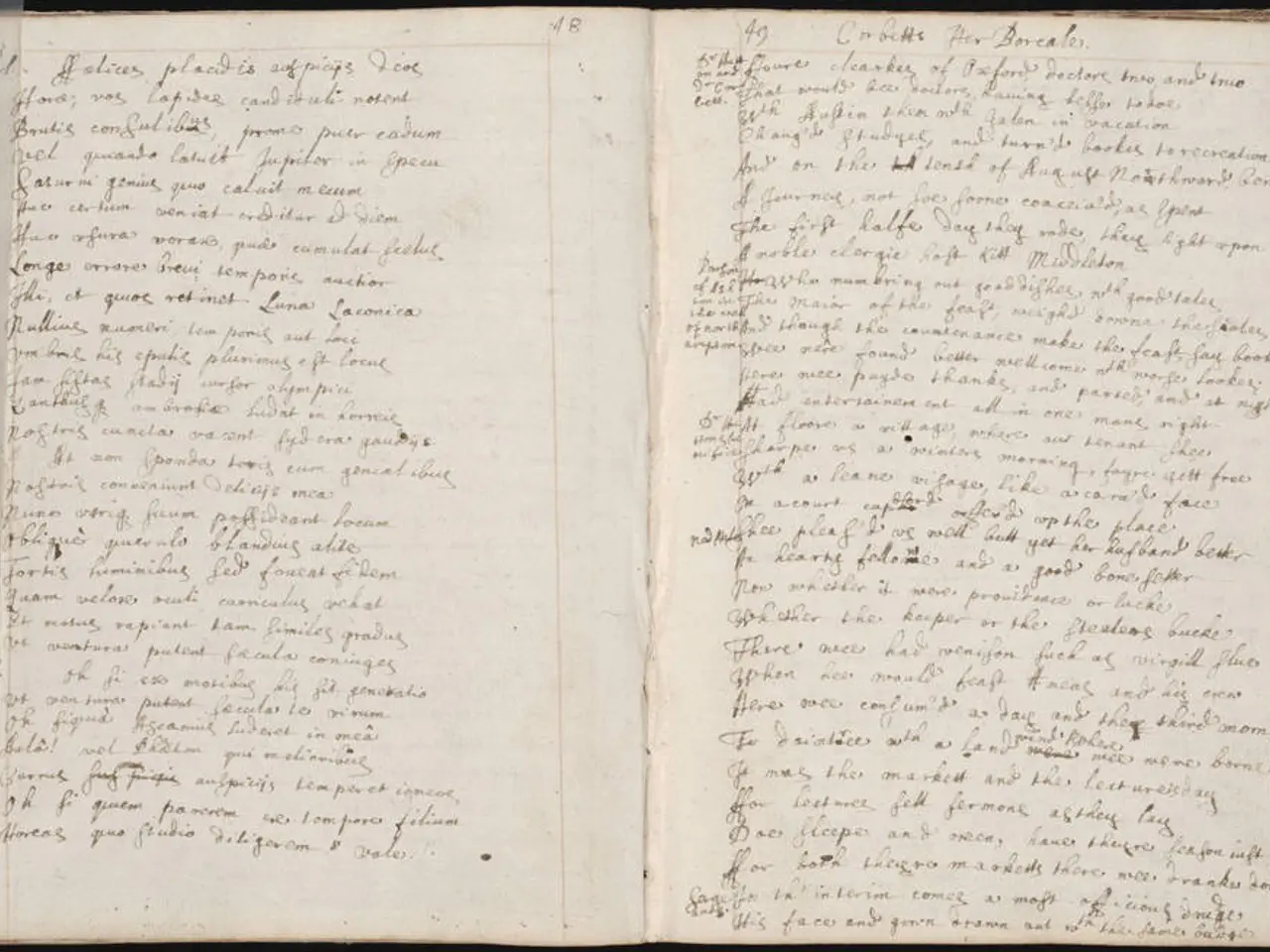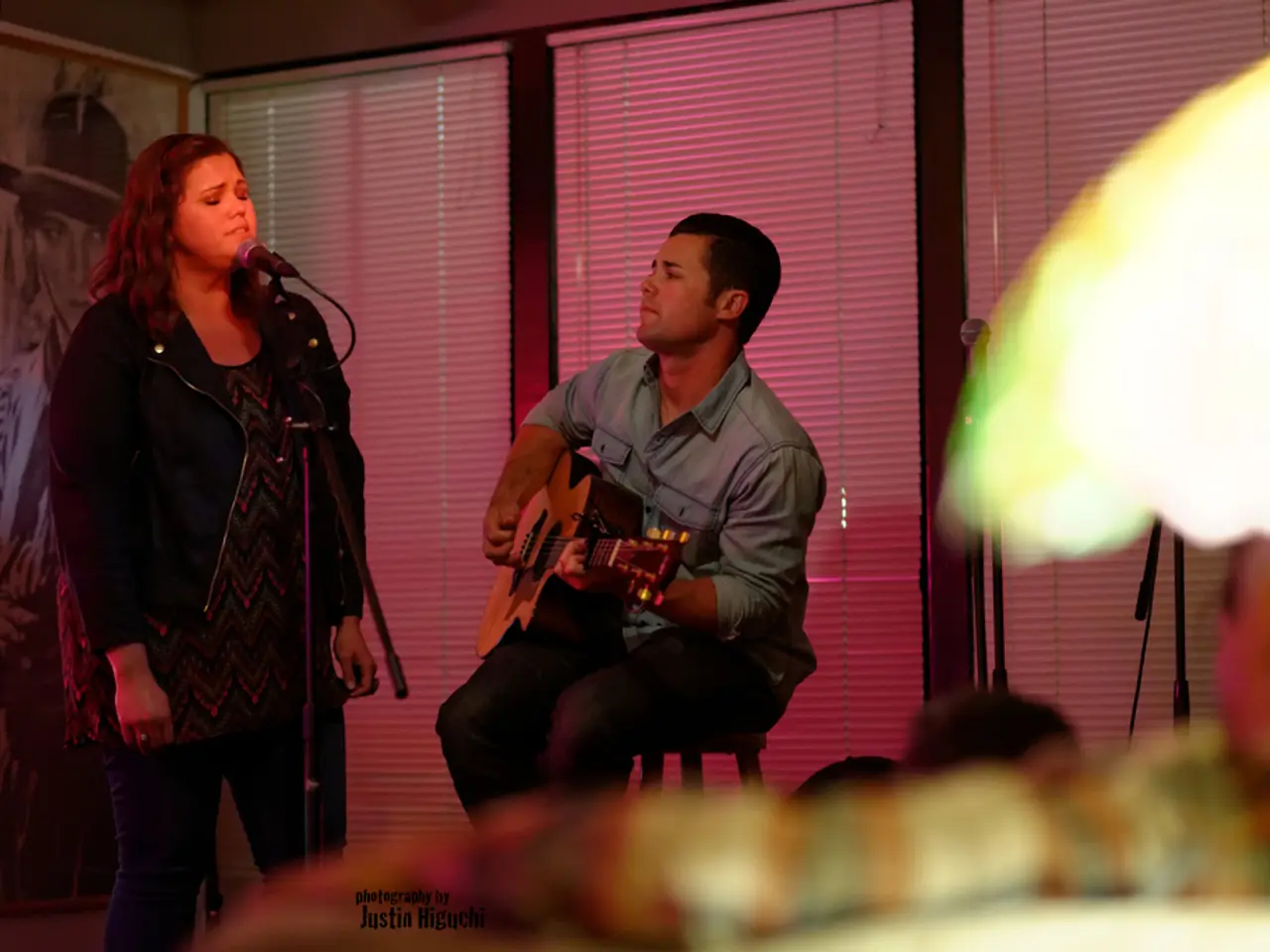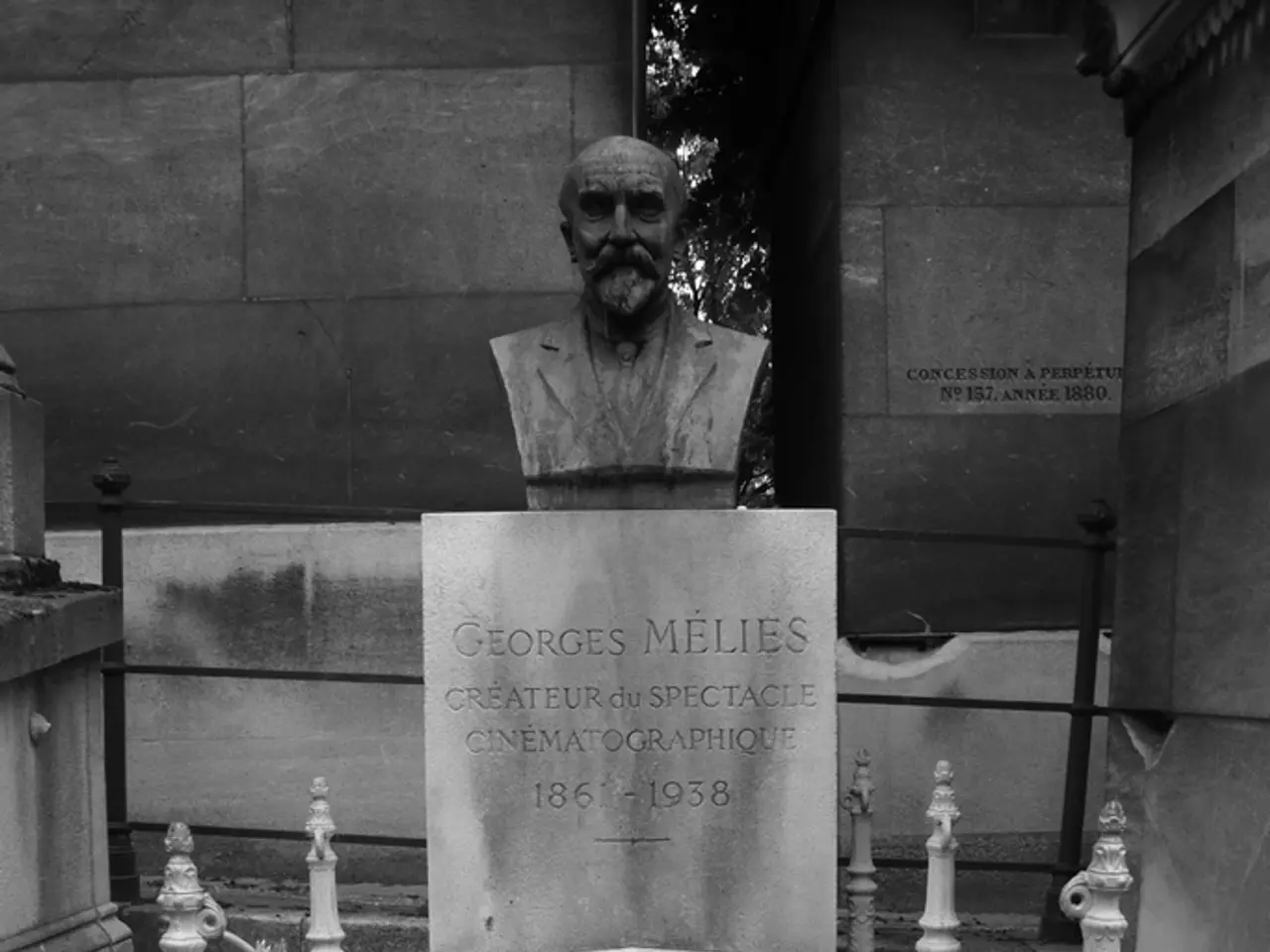Enhancing Harmony in Your Tunes: A Guide to Incorporating Complex Chords like the Seventh
In the realm of music, seventh chords are a valuable tool for songwriters seeking to add depth and complexity to their compositions. These four-note chords, built by stacking thirds on top of a root note, come in various forms, each with its unique sound and function.
The different types of seventh chords include major seventh (maj7), minor seventh (m7), dominant seventh (7), half-diminished seventh (m7♭5), and diminished seventh (dim7). Each type combines a specific triad with a seventh interval above the root, creating distinct sounds and functions useful in songwriting.
Major seventh (maj7), built with a major triad plus a major seventh interval (e.g., C–E–G–B), sounds bright and open. It is often used to add richness and sophistication to a chord progression.
Minor seventh (m7), built with a minor triad plus a minor seventh interval (e.g., C–E♭–G–B♭), has a moody, soulful tone, common in jazz, ballads, and pop.
Dominant seventh (7), which combines a major triad with a minor seventh (e.g., C–E–G–B♭), creates tension that naturally seeks resolution. This chord is a staple in blues, jazz, and functional harmony, driving the progression forward and creating musical movement.
Half-diminished seventh (m7♭5) is built on a diminished triad plus a minor seventh, offering a tense but less harsh sound than a fully diminished chord.
Diminished seventh (dim7) is built entirely of stacked minor thirds, creating a symmetrical sound. It is highly tense and often used as a modulation or transition chord.
How Seventh Chords Are Used in Songwriting
Adding seventh chords enriches standard triads, offering more sophisticated and emotionally nuanced harmonic textures. Dominant seventh chords, especially, build tension that resolves to tonic chords, driving the progression forward and creating musical movement.
Seventh chords can replace or augment triads within progressions to add color and complexity, e.g., using Cmaj7 or Cm7 instead of simple C major or minor chords to create a richer soundscape. Notes from seventh chords may serve as chord tones around which melodies are crafted, helping to create cohesive harmonic-melodic relationships.
Diminished seventh chords, due to their symmetrical structure, are effective for key changes and dramatic shifts within a piece. Using these chords thoughtfully enables songwriters to balance harmonic stability with expressive tension, enriching the overall musical narrative.
The C major 7th chord (C–E–G–B) has a rich and nostalgic sound with extra character from the seventh. The dominant seventh chord is essential for functional harmony, while the minor third brings its characteristic "sad" flavor to the chord, and the minor seventh on top adds richness, but a slightly different color than the major 7th. The third of the dominant seventh chord (B) is the seventh degree of the original C major scale, and the half-diminished seventh chord is most often encountered as the seventh chord built on scale degree two of the minor scale.
These distinctions and uses make seventh chords an essential tool for crafting harmonic depth and emotional expression in songwriting.
Music distribution platforms play a crucial role in making various types of music easily accessible for entertainment purposes. The unique sounds and functions of seventh chords, such as major seventh (maj7), minor seventh (m7), dominant seventh (7), half-diminished seventh (m7♭5), and diminished seventh (dim7), are valuable resources for songwriters seeking to distribute music with advanced harmonies and emotional nuances.








